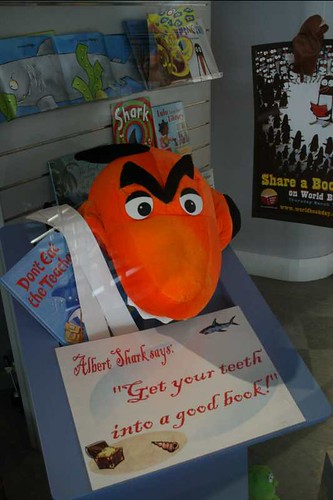A quick summary of the Children's Plus Survey results, which are mostly very encouraging.
Children were asked whether they thought that the library overall was ‘good’, ‘OK’ or ‘bad’. The standard is that 77% should state that the library is ‘good’.
- 89% stated that the library overall is good.
- The highest results, discounting those libraries that had less than 10 questionnaires completed, were Norden and Wardle libraries, with 97%.
- The majority visited with ‘someone from my family’ (58%)
- A good proportion visited with their school, nursery or playgroup (23%)
- A proportionally larger of respondents at Langley, Junction, Smallbridge and Wardle libraries visited the library on their own (over 16-23%). This was very different to the remaining libraries (where this tended to be less than 10%).
- The most popular activities were ‘borrowing things’ (66%) or ‘reading’ (41%).
- Also popular were ‘using computers’ (34%) or ‘looking around’.
- ‘Playing with toys’ was popular at Darnhill Library (35%) and Balderstone Library (47%).
- Belfield, Langley and Wardle had very high proportions of children visiting to use computers (all over 50%).
- Doing homework was a key reason for visiting Wardle Library (39%).
Children were asked why they like borrowing books from the library (applies to those who stated that they visit to borrow books).
- The majority ticked that they ‘like reading’ (68%), that ‘the library has good books’ (44%) or that they ‘want to get better at reading’ (39%).
- At Belfield, 57% ticked that they wanted to read books to help with their homework - much higher than elsewhere.
- 86% thought our books are good
- 13% OK
- 1% bad
- 67% thought homework help was good
- 30% OK
- 3% bad
Use of computers in libraries
Children were asked where they use computers (they could tick more than one option).
- The majority use computers at home (72%) or at school/nursery/playgroup (60%).
- 42% use computers at the library.
- Smithybridge, Norden and Alkrington had a low response rate for those using computers in the library (between 15-20%).
Children were asked what they use the computers for in the library (applies to those who stated they visit the library to use computers).
- The majority use them for playing games (65%)
- 53% use them for homework.
- 54% use them for looking at websites.
- 83% think they are good
- 16% OK
- 1% bad
Participation in activities
Children were asked if they had been to the library for activities such as reading groups, events etc. They could tick more than one option (including ‘none of these’).
- 47% had not attended any event.
- 26% had attended an under 5s event, and 26% a holiday activity.
- 17% had attended a ‘book or reading activity’, 9% an ‘after-school activity’ and 6% ‘to take part in a reading group’.
- 44% of children at Norden, 49% at Alkrington and 41% at Smithybridge said that they had attended an under-5s activity - a much greater proportion than other libraries.
- Nearly 50% of respondents at Darnhill had attended a holiday activity - again a much greater proportion than other libraries.
Children were asked if they thought the library was ‘a friendly place’, ‘a safe place’, ‘easy to get to’, etc. In general, all libraries scored highly in each of the perception questions apart from ‘open when I want’.
- 100% of Castleton, Langley, Spotland and Wardle respondents thought the library was a ‘safe place’.
- However, only 85% of respondents at Castleton thought the library was ‘easy to get to’ - lower than other libraries.
- Some libraries scored low on ‘open when I want’ (50-60%). These were Alkrington, Smallbridge and Wardle.
- 66% said that use of libraries had helped them to read better.
- 53% said that it helped them to ‘learn and find things out’ - this was particularly high at Belfield (69%).
- 47% said that it helped them to do better at school - and this was very high at Belfield and Norden.
- 38% said that it helped them to ‘join in and try new things’.
- 32% said that it helped them to use computers, and 24% to ‘make new friends’.
- At Balderstone, Belfield and Darnhill, 40-50% of children said that they made new friends in the library.
- 56% of respondents were girls, 44% boys.
- The largest split in gender was at Spotland, where 70% were girls, 30% boys.
- The majority of respondents were aged 5-10 (54%)
- 80% identified themselves as white, 20% Asian, black, ‘mixed’ or ‘other’.
- Belfield and Smallbridge had the largest proportion of respondents from ethnic minority groups - both over 40%.

